Edit on GitHub
— הפוסט זמין גם בעבריתFlashing Tasmota on Sonoff RF bridge
Flashing Tasmota firmware on Sonoff RF Trasmitter/Recevier manual
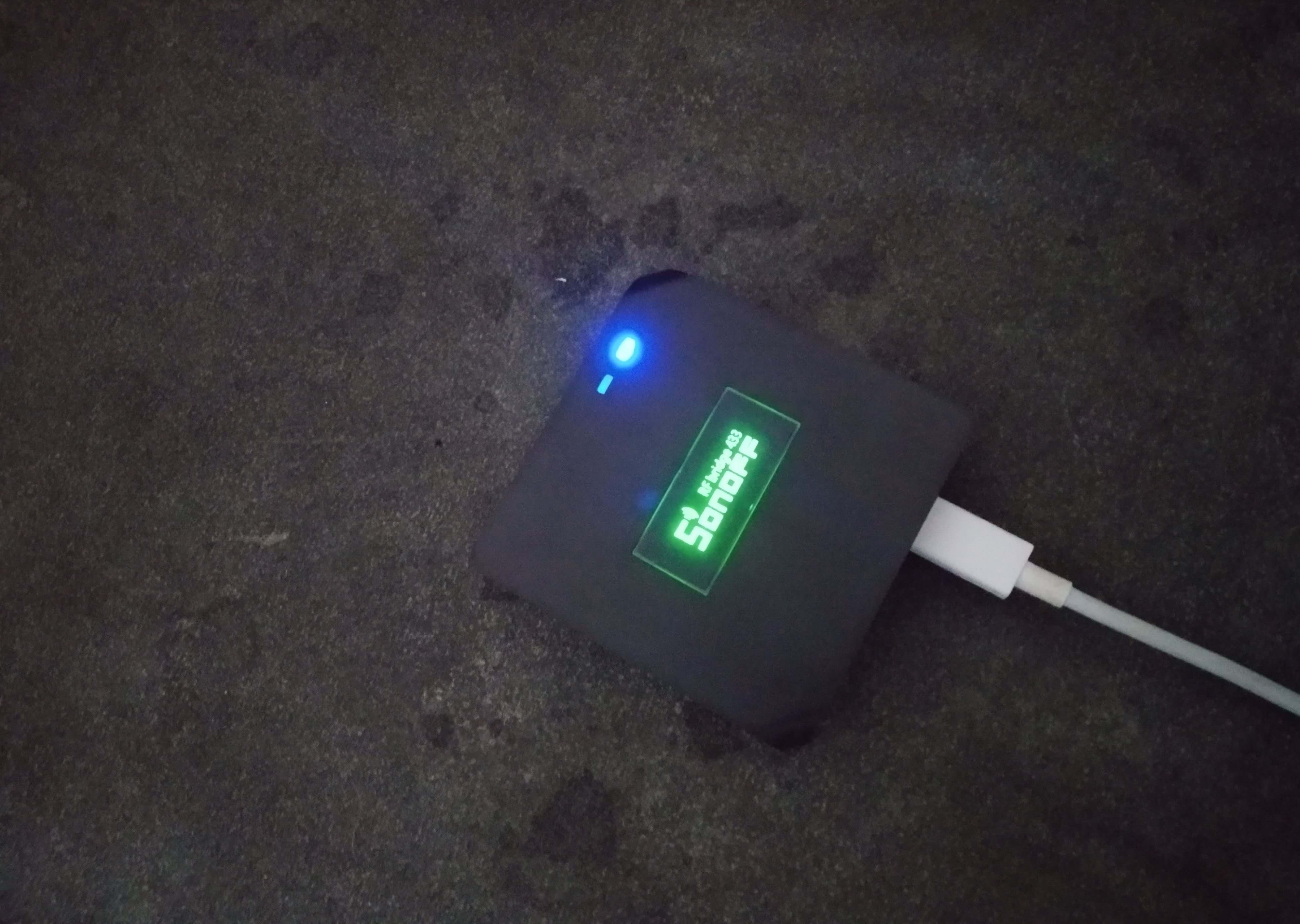
Flashing manual for Sonoff RF bridge 433MHz.
Updated on 27/6/2020
Pictures of the device

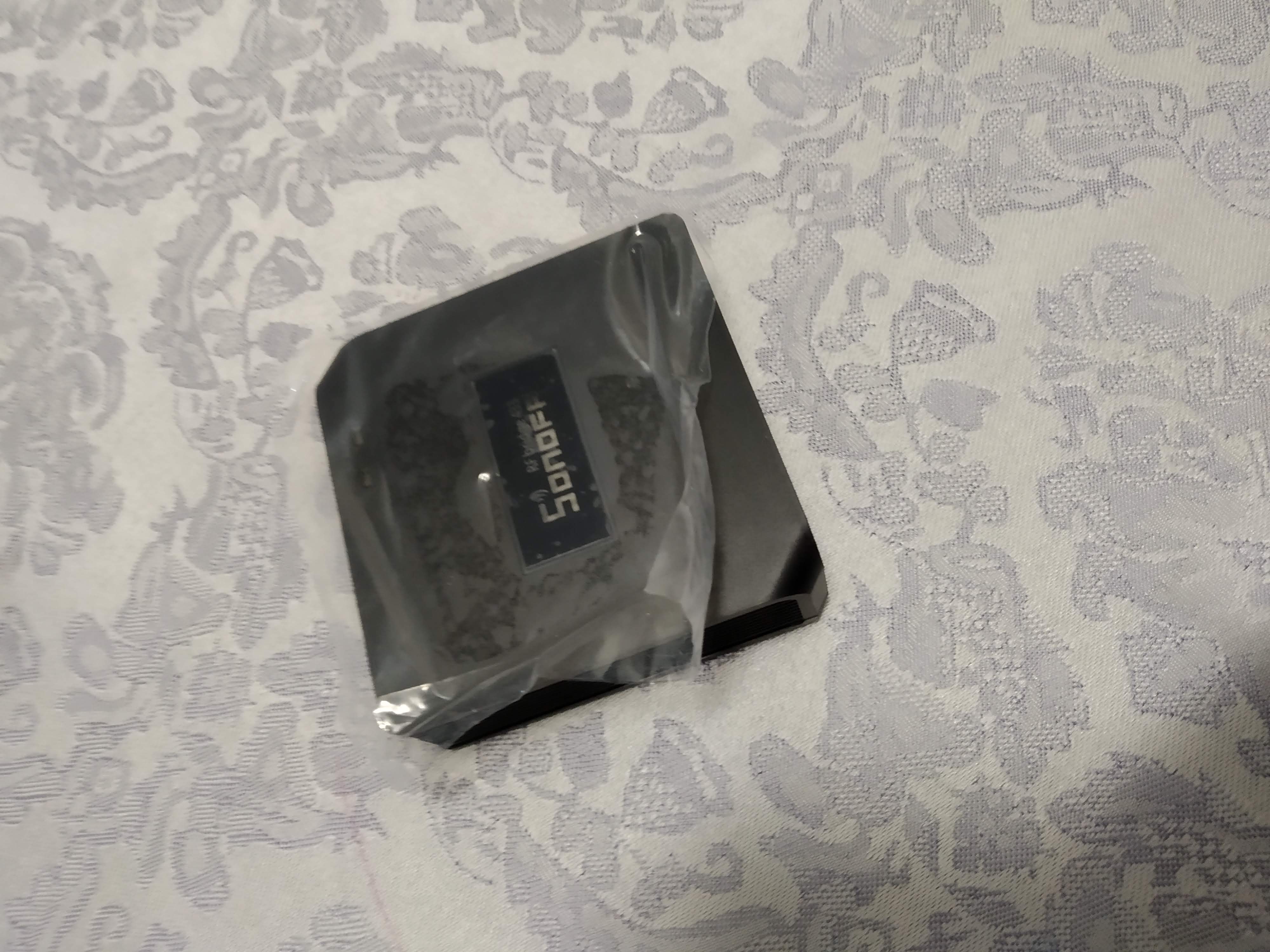


Flashing equipment
These are the tools I used, you can buy from other sellers or similar tools.
Hardware equipment
- IR device (transmitter and receiver)
- Soldering iron and tin
- 2.54MM Pins
- Female Wires
- USB to TTL serial
Softwares to use
- PC with Windows 10 OS.
- download
esptoolflashing tool from here or directly from the official repo at GitHub. - Tasmota firmware from here (version Tasmota v8.3.1 Fred) or directly from the official repo at GitHub.
Flashing the firmware
THE FLASHING PROCESS IS VERY DANGEROUS! BE AWARE, USING THE MANUAL IS AT YOUR OWN RISK!!!
Software settings
Create a folder and move to it the downloaded files
tasmota.bin and e sptool.exe.
Let's assume the folder is C:\flasing
Connect the USB to Serial converter to the PC.
Wait until the drivers are automatically installed by Windows.
(if it doesn't work automatically, go here or here)
In Windows, search for device manager
and select the first result, or press Windows Key + R and insert devmgmt.msc.
In the device manager, look for the device serial port COMX.
We will need it in the next step. In my case, it was COM6.
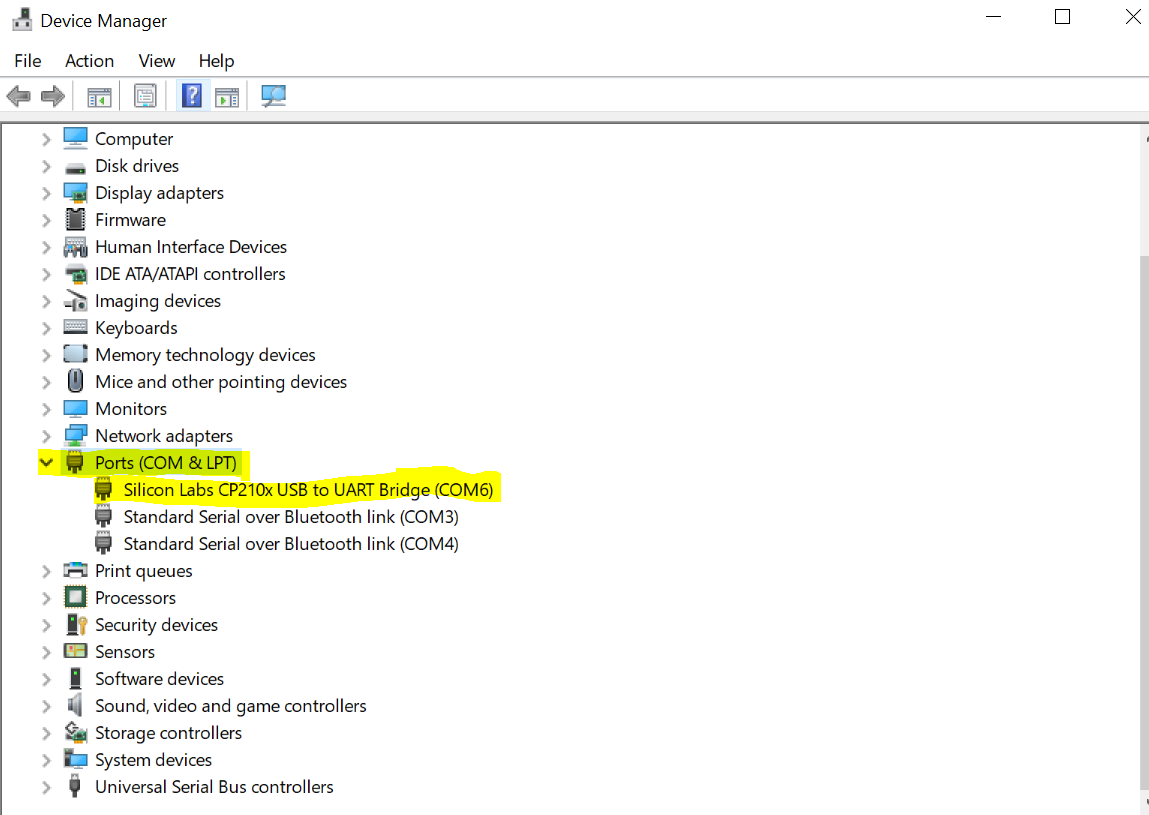
Open the command line in the directory C:\flasing.
(If you don't know how, look here)
In the command line write the following command:
esptool.exe -vv -cb 115200 -cp COM6 -ca 0x00000 -bz 1M -bm dout -cf tasmota.bin
Note that the COM6 should be replaced by your device port from earlier.
Do not press 'Enter' yet, keep the command ready-for-use for the next step
Disconnect the USB to Serial converter from the PC.
Now move to the next step:
Hardware settings
Opening the device
First of all, unplug the device from the power source, and do not connect it until flashing process is done
The device consists of two parts, which are connected with 4 screws.

After you have opened the device, the board should look like this:

Now, gently and carefully remove the board from the top of the plastic. The board should look like this:

Gently lift the thick black part with the white sticker at 90-degrees. (Be careful to not sever it from the board).
Make sure that it looks like this:

Now turn the switch in the panel to OFF mode.
Attached chart:

Soldering
We need to connect the device (while not connected to power!!!) to the PC via the converter.
The connection diagram is:
- port
3v3of the device to the3v3of the converter - port
TXDof the device to theRXDof the converter - port
RXDof the device to theTXDof the converter - port
GNDof the device to theGNDof the converter
Photographs and diagrams of the connections:
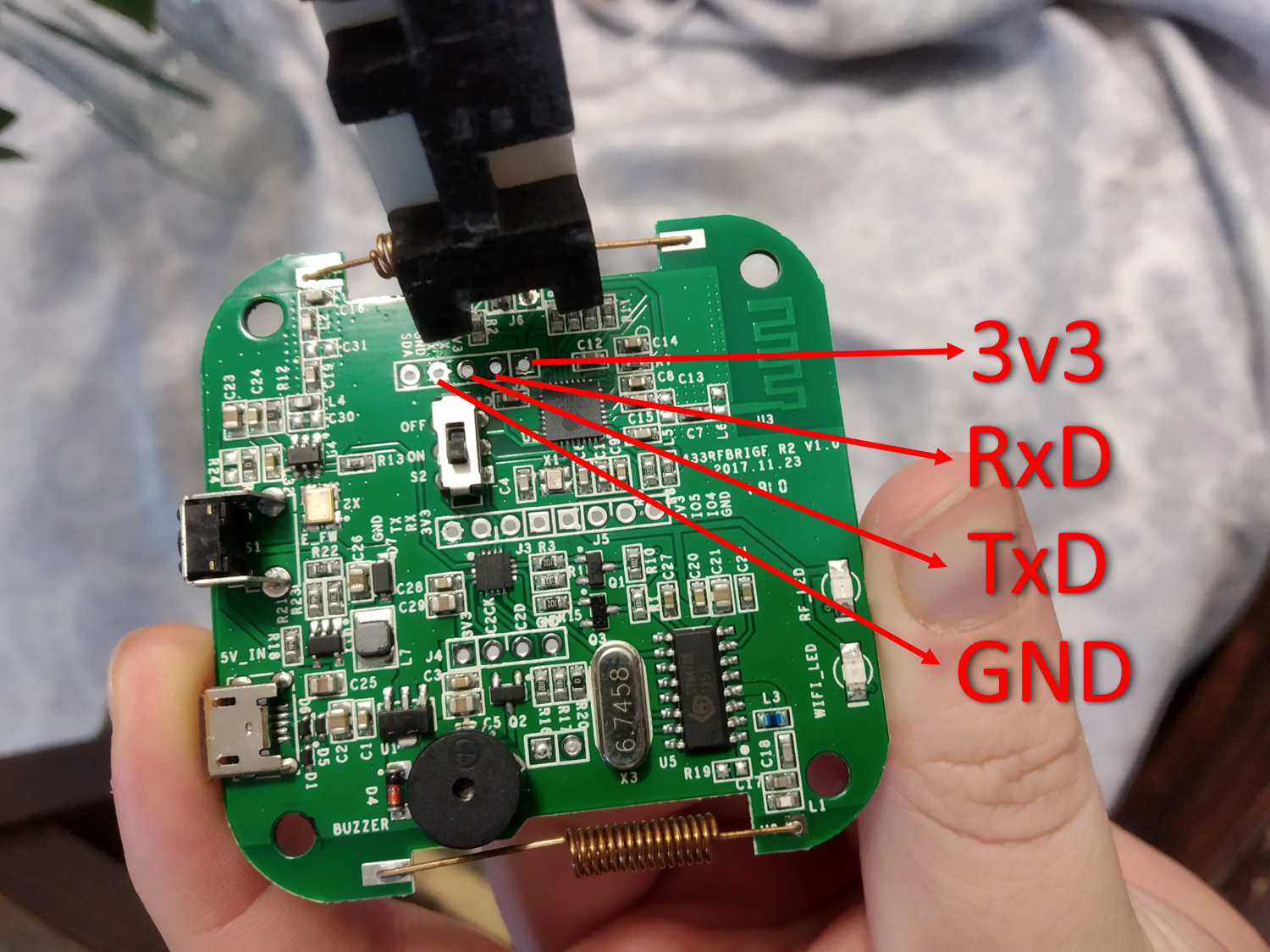



Connecting to the PC
Make sure again that all wires are well connected.
Again, make sure all wires are wired correctly, everything is connected, and the on-board switch is OFF.
Now everything is ready for the ironing
Press on the Pairing Button.
Picture of the button's position:

Connect the converter to your computer while pressing and holding the button and in the command line window that you prepared earlier, press 'Enter'.
Assuming everything went well and we got the message flush complete,
Like this:

The flashing is finished!
Disconnect the converter from the computer, remove the soldered wires and return the switch on the board to ON mode. Gently reconnect the parts of the device and close it with the screws.
Setting the device
Make sure that all wires are removed, and the cover is in its place, then connect the device to the power source.
Make sure that you have disconnected all the wires and replaced the switch on the board to ON. Connect the device to a power supply.
Wait a few seconds and then a new network named sonoff-xxxx (tasmota-xxxx in the new versions) should appear in the WiFi list on a PC or smartphone.
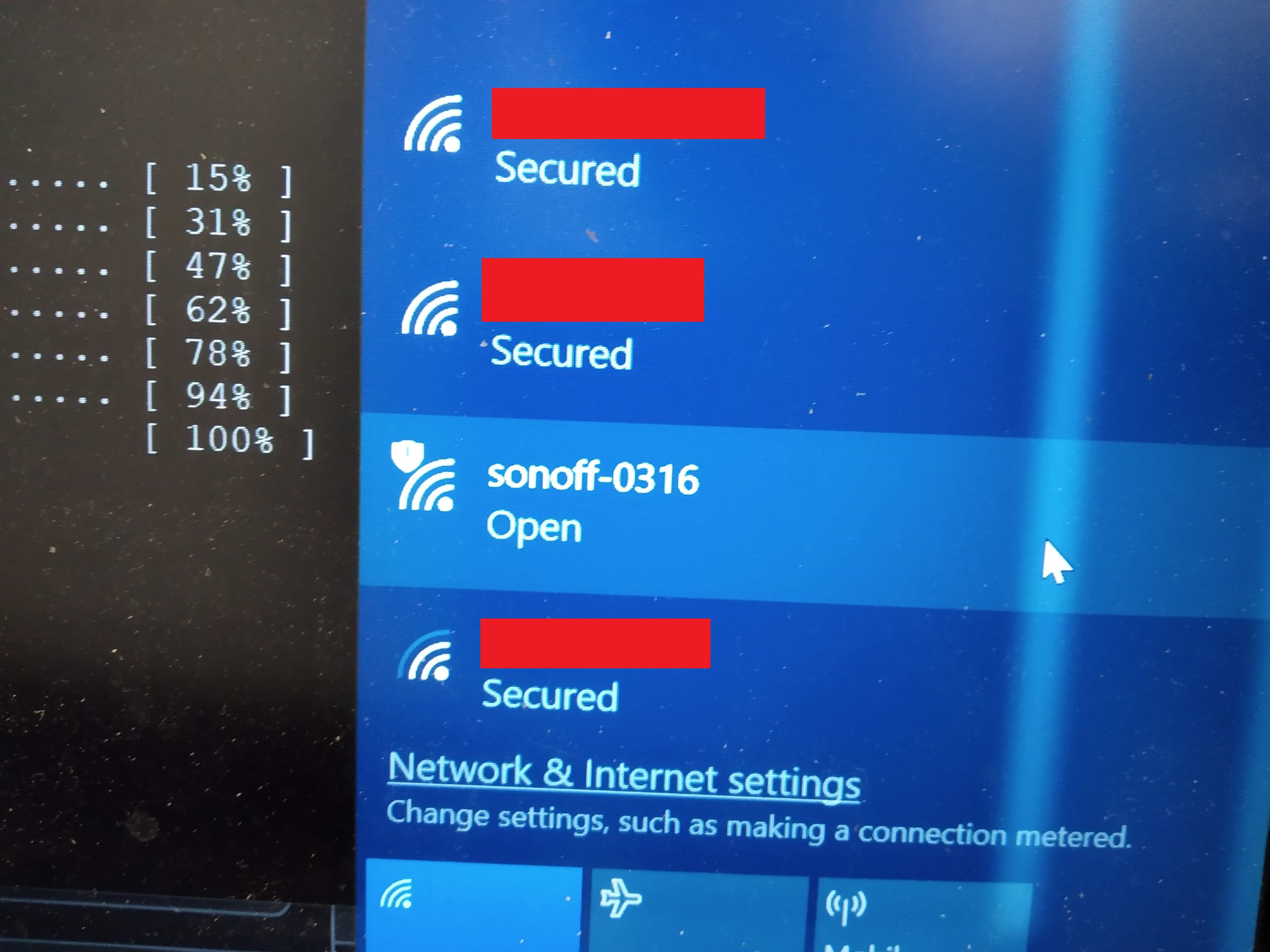
Connect to the new network.
Open the browser and open 192.168.4.1.
Enter your home SSID and the password (Tasmota supports two networks)
And then press 'Save'
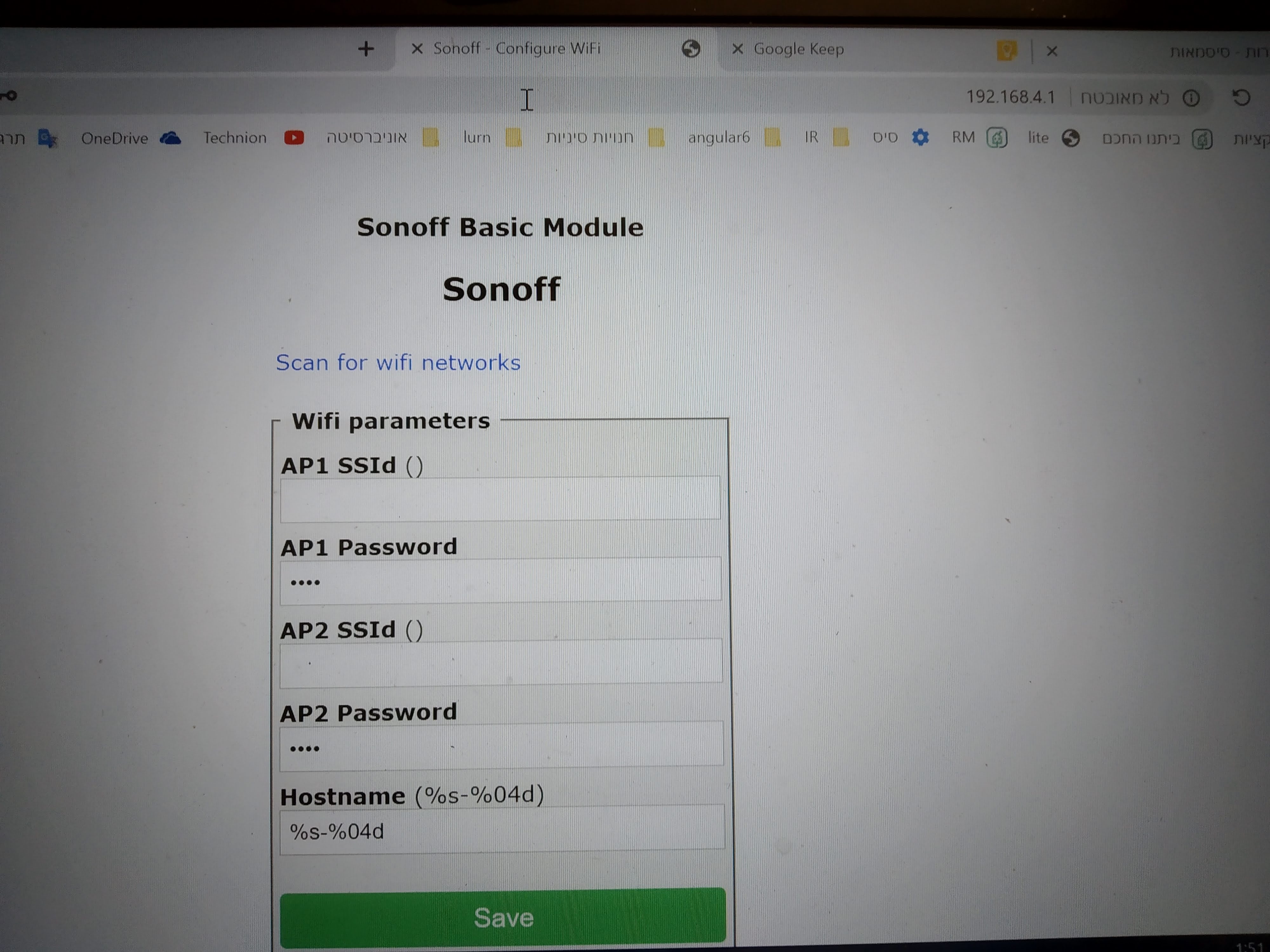
The device should reboot and connect to your home network.
Connect back to the home network, enter to the home router to get the new device IP address.
Each router has a different UI but all should have somewhere a table of network devices IPs.
In my router (ASUS RT-xxxxxx) it looks like this:
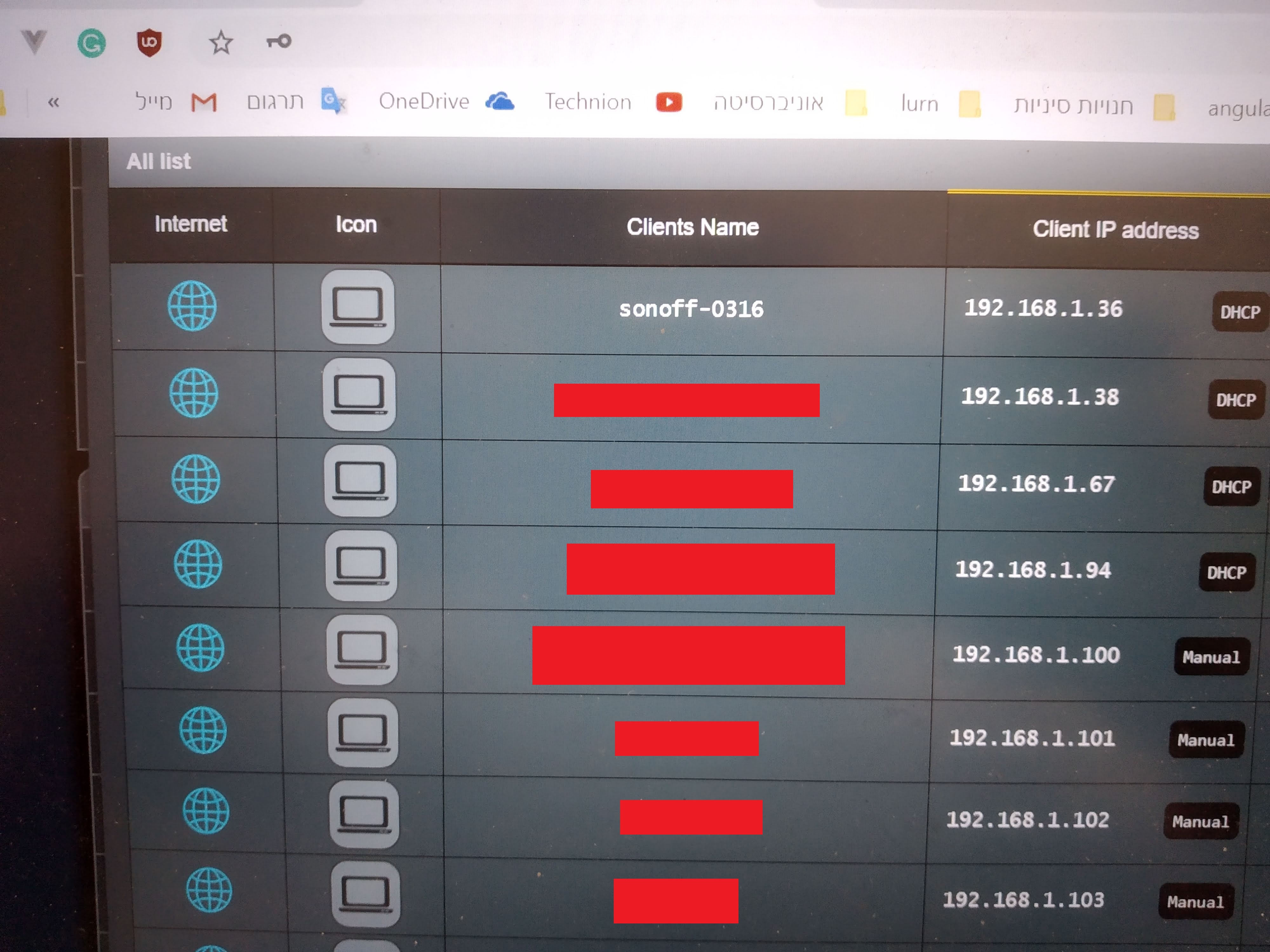
After you know the new device's IP (in my case, 192.168.1.36)
open the browser and press the IP in the URL bar.
Then in the Web interface press Configuration and then Configure Other.
Replace the 'Template' content with:
{"NAME":"Sonoff Bridge","GPIO":[17,148,255,149,255,255,0,0,255,56,255,0,0],"FLAG":0,"BASE":25}
(From the template project, RF Bridge page)
and check the 'Activate' checkbox and press 'Save'.
The device should reboot again.
And that is it. you've finished.
Now you can use the device.
I recommend to see the Tasmota RF documentation here.